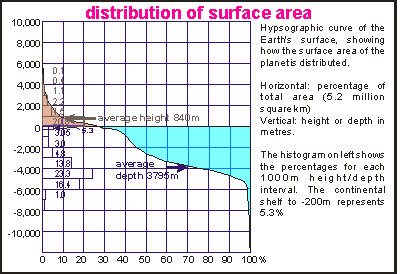 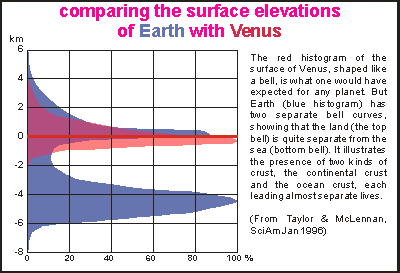 〔Seafriends Marine Conservation and Education Centreによるseafriendsの『oceanography』の中の『Oceanography: Oceans』から〕 地球の地殻表面の高度分布は2つのピークを示し、これらは大陸地殻と海洋地殻に相当する。一方、金星の表面高度分布は1つのピークしかない。 |
戻る<1|2|3|4|5|6|7|8|9|10|11|12|13|14|15<
|
|
| 配付プリント等 |
| 補足説明 |
|
|
  〔Seafriends Marine Conservation and Education Centreによるseafriendsの『oceanography』の中の『Oceanography: Oceans』から〕 地球の地殻表面の高度分布は2つのピークを示し、これらは大陸地殻と海洋地殻に相当する。一方、金星の表面高度分布は1つのピークしかない。 |
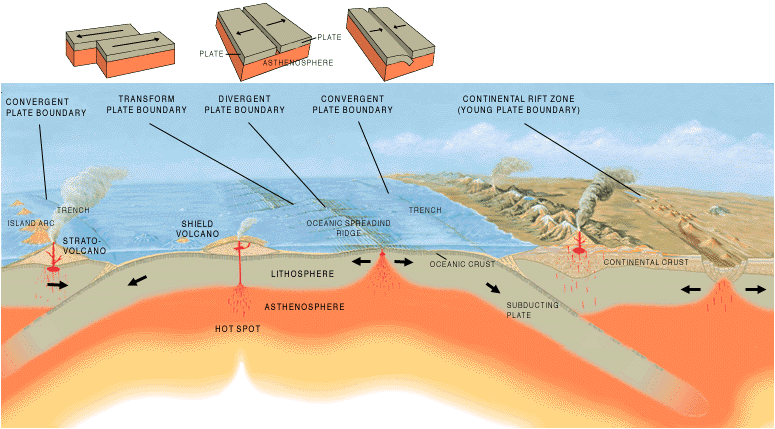 A cross section illustrating the main types of plate boundaries. Illustration by Jose F. Vigil from This Dynamic Planet -- a wall map produced jointly by the U.S. Geological Survey, the Smithsonian Institution, and the U.S. Naval Research Laboratory. 〔USGSのIndex of pubs.usgs.gov/gip/の『Earthquakes』の『Where Earthquakes Occur』から〕 プレートの3種の境界:①発散(divergent)、②収束(convergent)、③トランスフォーム〔断層〕。 |
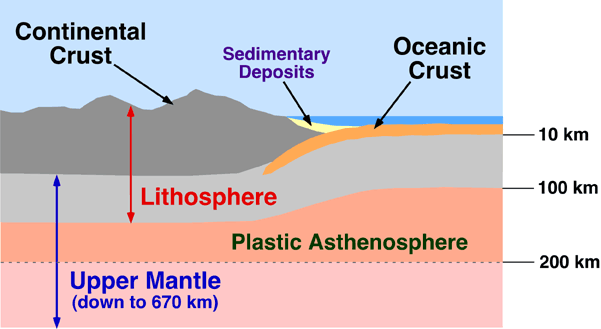 Figure 10h-2: Structure of the Earth's crust and top most layer of the upper mantle. The lithosphere consists of the oceanic crust, continental crust, and uppermost mantle. Beneath the lithosphere is the asthenosphere. This layer, which is also part of the upper mantle, extends to a depth of about 200 kilometers. Sedimentary deposits are commonly found at the boundaries between the continental and oceanic crust. 〔Michael Pidwirny氏によるPhysicalGeography.netの『FUNDAMENTALS OF PHYSICAL GEOGRAPHY』の『CHAPTER 10: Introduction to the Lithosphere』の中の『(h). Structure of the Earth』から〕 硬いプレート(地殻+最上部マントル)〔=リソスフェア〕は軟らかいマントル〔=アセノスフェア〕上を水平方向に移動する。 |
【宇宙の元素存在度=太陽系の元素存在度】
 〔地質調査総合センターの太田充恒氏による『希土類元素って?』の『希土類元素の地球科学』の『第1回 Oddo-Harkins (オド-ハーキンス)の法則』から〕 太陽系の元素組成は太陽光のスペクトル分析(太陽大気の化学組成)と隕石組成(とくに炭素質コンドライトの化学組成)とから求められている。これらの結果は、基本的によく一致する。 |
| 参考 |
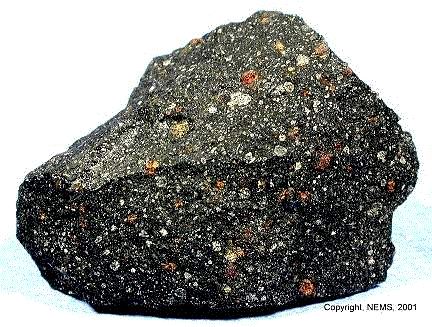 Murchison carbonaceous chondrites (23 gram fragment) 〔New England Meteoritical ServicesによるMeteorlab.comの『Current Lab Photo』の『Allende and Murchison』から〕 炭素質コンドライト(マーチソン隕石)。直径〜数mmのコンドリュールが見える。 |
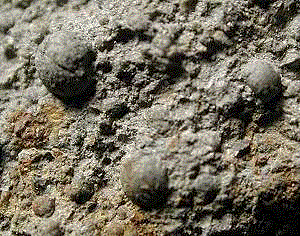 Chondrules 〔New England Meteoritical ServicesによるMeteorlab.comの『Meteoritics』から〕 |